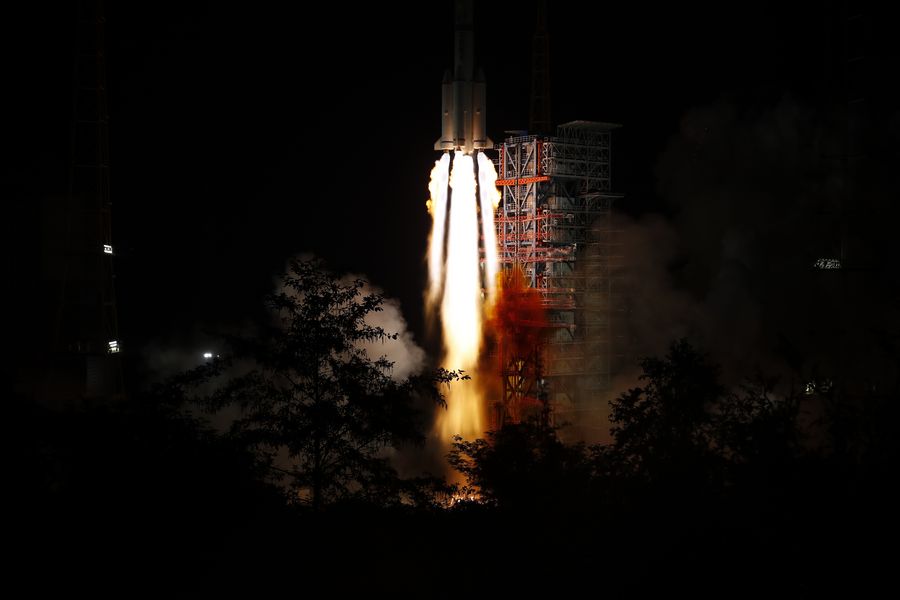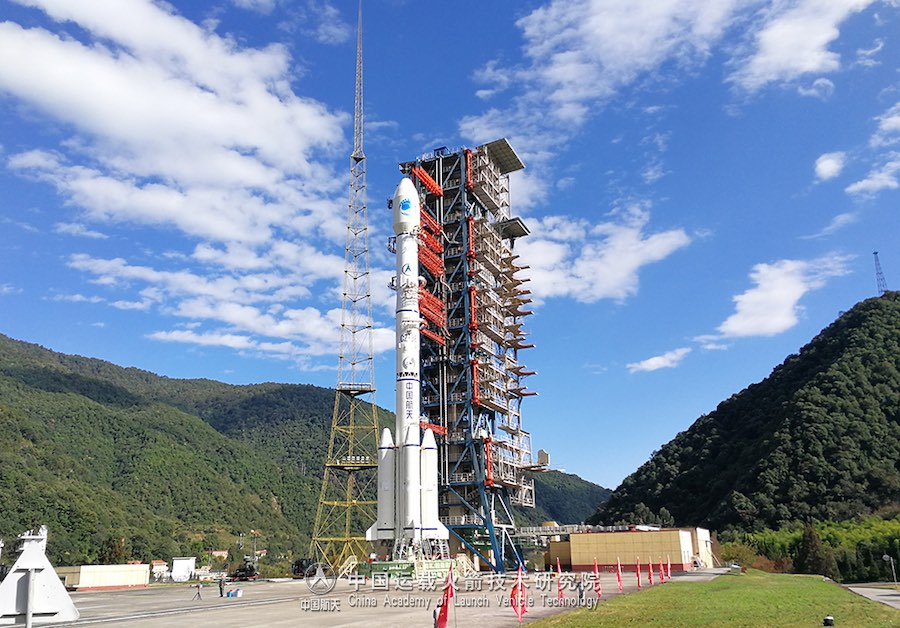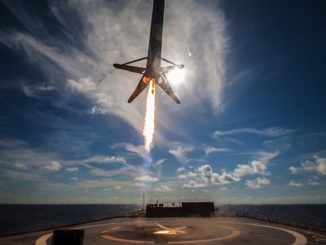
A Chinese Long March 3B rocket successfully carried a new Beidou navigation satellite into orbit Monday, continuing a brisk launch cadence at the country’s launch sites.
The Long March 3B rocket lifted off from the Xichang space center at 1743 GMT (12:43 p.m. EST) Monday, according to the China Academy of Launch Vehicle Technology, the Long March 3B’s prime contractor.
The liftoff from Xichang, located in southwestern China’s Sichuan province, occurred at 1:43 a.m. Tuesday, Beijing time.
The third-generation Beidou satellite launched Monday will join China’s independent space-based navigation network, moving the Beidou fleet closer to continuous global coverage, a milestone expected some time next year.
The 184-foot-tall (56-meter) Long March 3B rocket launched toward the east from Xichang, released its four hydrazine-fueled strap-on boosters around two-and-a-half minutes after liftoff, then shed its core first stage moments later. A second stage, also fed by hydrazine fuel, fired next, followed by staging and ignition of the Long March 3B’s cryogenic hydrogen-fueled third stage.
U.S. military tracking data indicated the launcher deployed its Beidou satellite payload into an elliptical transfer orbit ranging between 104 miles (168 kilometers) and 22,262 miles (35,828 kilometers) in altitude. The inclination of the transfer orbit was 28.5 degrees to the equator.

The Beidou satellite will use its own propulsion system to maneuver into a circular geosynchronous orbit more than 22,000 miles (nearly 36,000 kilometers) above Earth. The maneuvers will also steer the spacecraft into a higher-inclination orbit with a tilt of 55 degrees to the equator.
China’s Beidou fleet is analogous to the U.S. military’s Global Positioning System network, and the Russian Glonass and European Galileo navigation systems. The Beidou program will give China an independent source of positioning and timing services for military and civilian users.
The Beidou network includes satellites positioned in three different types of orbits.
When complete, 27 Beidou satellites will fly in Earth orbit more than 13,000 miles above the planet, similar to the orbits used by GPS, Glonass and Galileo satellites. But unlike the other global navigation systems, the fully-operational Beidou network will include eight spacecraft in geosynchronous orbit, with five permanently over the equator and three others in inclined orbits that swing north and south of the equator during each 24-hour orbit.
Monday’s launch gives the Beidou constellation three new-generation satellites in inclined geosynchronous orbits, filling that segment of the network for global coverage.
The satellite launched Monday is the 49th Beidou spacecraft launched since 2000, a number that includes earlier-generation satellites that are no longer operating. It’s the 24th third-generation Beidou satellite launched.
The Beidou system started providing navigation service over the Asia-Pacific region in 2012, and China says the network will be ready for global coverage in 2020.
China’s state-run Xinhua news agency said the country will launch six more Beidou satellites to complete the global network.
The next pair of Beidou satellites heading to medium Earth orbit could launch on a Long March 3B flight later this month.
Monday’s mission was China’s 24th space launch attempt so far this year. Two of those flights failed to reach orbit.
Email the author.
Follow Stephen Clark on Twitter: @StephenClark1.



